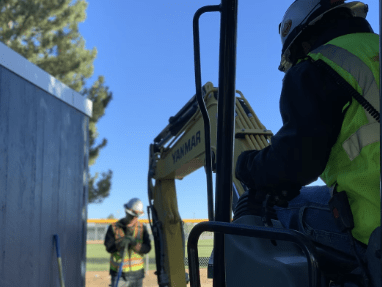Lifting heavy loads is a crucial part of many industrial and construction activities. However, it can also be a dangerous one, and so it is essential to ensure that the system for lifting these loads is reliable and secure. In this article, we will explore some tips for creating a safe and efficient system for lifting heavy loads.
Assess Your Needs
The first step in creating a reliable and secure system for lifting heavy loads is to assess your needs. You need to consider the weight of the load, the distance it needs to be lifted, and the environment in which it will be lifted. This information will help you determine the type of equipment you need, as well as any additional safety measures that may be required. It’s essential to assess your needs before choosing the right equipment for lifting heavy loads, to ensure that you select the most suitable equipment for the job.
Choose the Right Equipment
When it comes to lifting heavy loads, the right equipment is crucial. There are many different types of lifting equipment available, each with its own strengths and weaknesses. Some common options include cranes, hoists, and forklifts. When selecting your equipment, make sure that it is designed for material handling and that it is capable of handling the weight of your load. Also, consider the frequency and duration of use, the environment in which it will be used, and the availability of spare parts and maintenance support.
Install Proper Anchors and Supports
Anchors and supports are necessary to ensure that the lifting system is secure and stable. They are especially important when working with heavy loads, as they help to distribute the weight evenly and prevent the load from shifting or falling. When installing anchors and supports, make sure that they are designed to handle the weight of the load and that they are properly secured to the ground or other structures.
Maintain Your Equipment
Maintaining your lifting equipment is crucial to ensure its longevity, efficiency, and safety. Regular maintenance checks should be conducted to ensure that all components are functioning correctly and that there are no signs of wear and tear. You should also ensure that all safety mechanisms, such as limit switches and overload protection, are working correctly. Any issues should be addressed immediately to prevent more significant problems from arising.
Proper maintenance of your lifting equipment is essential to reduce downtime, extend equipment life, and ensure the safety of your team and the load being lifted.
Train Your Team
Even with the best equipment and safety measures in place, accidents can still happen if your team is not properly trained. It is essential to provide comprehensive training to all employees who will be involved in lifting heavy loads. This training should cover topics such as proper lifting techniques, equipment operation, and safety procedures. Regular refresher courses can also help to ensure that everyone stays up-to-date on the latest best practices.
In addition to proper training, there are many other safety measures that can be implemented to help prevent accidents. These may include installing safety barriers or fences around the work area, using warning signs and signals, and providing personal protective equipment (PPE) such as hard hats and safety glasses. It is also important to have an emergency response plan in place in case of an accident.
Follow Safe Lifting Practices
While reliable equipment and proper maintenance are crucial components of a secure lifting system, safe lifting practices are also essential. Some best practices to follow include lifting the load evenly, ensuring that the load is centered and balanced, using appropriate rigging and lifting gear, and never exceeding the equipment’s weight capacity. Additionally, always ensure that the load is secured before lifting and never leave it unattended while suspended.
Regular Maintenance and Inspections
Regular maintenance and inspections are essential to ensuring that your lifting system remains reliable and secure. This includes everything from checking the condition of the equipment and anchors to ensuring that all safety measures are in place and functioning properly. Regular inspections can help to identify potential issues before they become major problems, and can also help to extend the lifespan of your equipment.
Creating a reliable and secure system for lifting heavy loads is no joke. It requires careful consideration of your needs, selecting the right equipment, installing proper anchors and supports, providing comprehensive training, implementing safety measures, maintaining your equipment, and following safe lifting practices. But if you think that’s too much effort, you can always hire a group of professional strongmen to lift your heavy loads for you. Just make sure they don’t throw out their backs, or you’ll have to call in a chiropractor too! Remember, lifting heavy loads may seem daunting, but with the right system in place, it can be done safely and efficiently. And who knows, maybe one day your lifting system will be so reliable that you can even lift a fully-grown elephant (Disclaimer: please don’t try this at home!).


